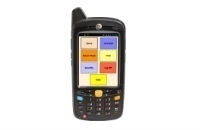How Experiential Retail is Revolutionizing Online and In-Store Shopping
We live in highly competitive retail times. Retailers are investing heavily in lead generation, paying an average of $34 for a retail lead. Yet, this isn’t translating into revenues as expected. Research suggests that the average conversion rate for a retail lead is as low as 3%. Understanding the why is essential to ensure this isn’t the reality for your retail business.
Here’s the fact: Consumers today are bombarded with endless shopping options, both online and offline. Merely offering them products isn’t enough; much more is needed to entice shoppers. This is where experiential retail delivers engaging, immersive, and often personalized elements to raise conversions. What does this mean for you as a retailer? How can you effectively implement experiential retail to stand out in a crowded marketplace? Let’s find out.
What’s experiential retail?
Experiential retail is a growing approach to retail in response to the evolving expectations of modern consumers. It involves creating unique retail experiences beyond just offering a place to buy goods. It’s built to ensure consumers connect on a deeper level. While experiential retail is traditionally associated with physical stores, it’s increasingly finding a place online over the past few years.
How do you introduce experiential retail in your store?
Introducing experiential retail is all about providing an exclusive experience that engages your consumer’s senses. For it, you need to focus on measures to build a connection between the brand and the consumer, not just on sales.
Here are some actionable ways to introduce experiential retail in your offline stores
- Creating touchpoints for interactive displays through touchscreens, live product demonstrations, or sensory experiences like lighting and sound effects. Do this to create a memorable experience as you inform customers about the features and benefits of your product.
- Allowing customers to personalize their products in-store, such as engraving their phone, tagging their name on a handbag, or customizing colors and materials.
- Hosting in-store events and classes aligning with your brand and products to engage customers in a community setting.
- Incorporating social media-friendly elements like selfie stations, interactive mirrors, or branded photo opportunities to encourage social shares.
- Building temporary pop-ups and installations offering exclusive products or experiences to generate buzz and attract shoppers.
- Implementing in-store AR tools allowing customers to see how products would look in their environment or to gather additional information through their smartphones.
Examples of brands acing experiential retail in their offline stores
Nike creates immersive in-store experiences at its flagship outlets featuring interactive displays, product customization stations, and even fitness sessions. This way, they transform a simple shopping trip into an engaging event.
Apple designs its stores as community hubs. To make the in-store shopping experience educational and enjoyable, they offer workshops, classes, and hands-on product demonstrations.
Let’s look at experiential retail for online stores now.
Here are some actionable ways to introduce experiential retail in your online stores
- Implementing tools enabling virtual try-ons or visualizing products in their space to make the online experience more tangible and relatable.
- Allowing online customization with interactive tools showing real-time previews of personalized items.
- Offering live chat and virtual shopping assistants to share personalized recommendations, answer questions, and guide customers
- Creating engaging multimedia content like video tutorials, 360-degree product views, and behind-the-scenes stories to deepen customers’ connections.
- Hosting virtual events, webinars, or live streams to let customers interact and engage in real time.
- Introducing gamification elements like reward points, challenges, or virtual scavenger hunts to make shopping more enjoyable.
- Using AI-driven algorithms to offer personalized product recommendations based on browsing history, purchase behavior, and customer preferences.
- Integrating social media platforms or features allows customers to shop directly from social feeds, participate in live shopping events, or share purchases with friends.
Examples of brands acing experiential retail in their online stores
Sephora has embedded a virtual artist tool in its online store to allow customers to try makeup products virtually before they purchase makeup. This has enhanced the shopping experience and reduced the uncertainty of buying makeup online, making their retail brand sticky.
Similarly, furniture retailer IKEA leveraged AR to let customers visualize how its furniture would look in their homes. This helps customers with the convenience of online shopping while bridging the gap between online browsing and in-store experiences.
How do you practically take advantage of experiential retail?
Whether it is physical or digital channels, if you’re looking at building rich, seamless shopping experiences, you need the support of technology. A great starting point is your retail management software, which you’ve been imagining as a support only for your back-end operations. You can use retail-specific ERP systems to integrate data from various sources. For example, you can combine customer preferences, inventory levels, and sales patterns to gather a unified view and deliver personalized customer experiences.
Example of using retail ERP for offline experiential retail: Your ERP systems can smoothen the management of any experiential events you organize. It can help you streamline logistics, from staffing to supply chain coordination, and build a lasting customer impression.
Example of using retail ERP for online experiential retail: Suppose you incorporate a virtual try-on on your eCommerce website. Using your ERP’s real-time inventory tracking features in conjunction can ensure that products featured in your virtual try-on are available for immediate purchase. This can enhance customer satisfaction and increase your chances of sales.
Bottom line: You must deliver experiences customers crave
As consumer expectations evolve, your retail strategy must adapt. The current times demand seamless blending of the physical and digital worlds to create moments that matter. Whether you do this through interactive in-store experiences or by extending immersive online platforms, you must foster customer connections and resonate emotionally. When you do this successfully, stronger and more loyal customer relationships will be a byproduct.
Wondering where to begin? Start by leveraging the power of your retail ERP systems to deliver personalized, memorable experiences that today’s consumers crave. Magstar offers retail management solutions to help you with every facet of immersive shopping experiences, from customer relationship management to order fulfillment and ensuring your offerings match your customers’ needs. Contact us for a demo today.
RECENT POSTS
 POS Security: How to Protect Your Retail Store Against Employee TheftWe live in highly competitive retail times. Retailers are [...]
POS Security: How to Protect Your Retail Store Against Employee TheftWe live in highly competitive retail times. Retailers are [...] 3 Big Data Retail Trends Your Business Should EmbraceIt's hard to know when "reaching for the stars" [...]
3 Big Data Retail Trends Your Business Should EmbraceIt's hard to know when "reaching for the stars" [...] Magstar Mobile POS showcased at NRF 2014Total mPOS (Point of Sale) was showcased at NRF [...]
Magstar Mobile POS showcased at NRF 2014Total mPOS (Point of Sale) was showcased at NRF [...]